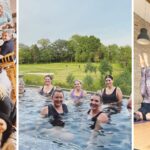- Feel Good
- 17th Nov 2020
- 1,076 Views
- 0
- 1 minutes
Destress with Sian’s Breath Work

The idea of consciously controlling the breath to increase physical, mental and emotional wellbeing has been around for thousands of years – but has never felt more relevant










Comments